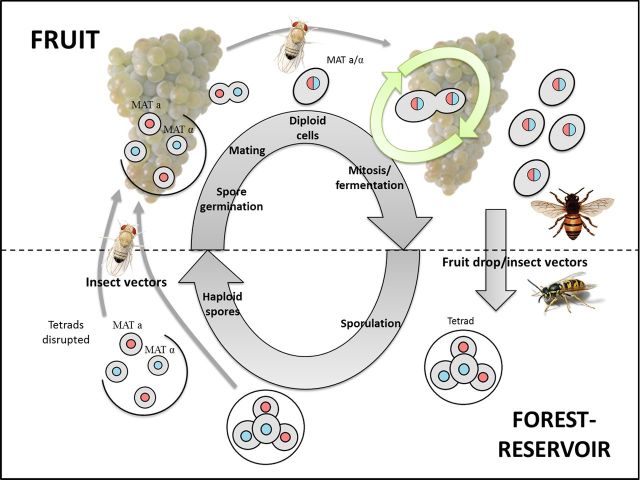Figure 1.
The fruit forest-reservoir hypothesis. A reservoir population of S. cerevisiae exists in various forest habitats (soil, bark, etc.) primarily in a sporulated state, and that some fraction of these spores are transported to fruit, potentially by insect vectors. These spores germinate and mate in the sugar rich fruit niche to form diploid cells that undergo mitosis and fermentation. At the end of the fruit season some fraction of the now very large population are returned and contribute to the forest reservoir, and the cycle continues.

